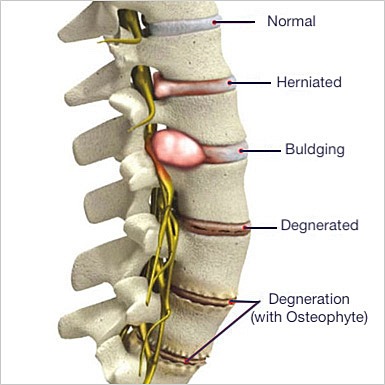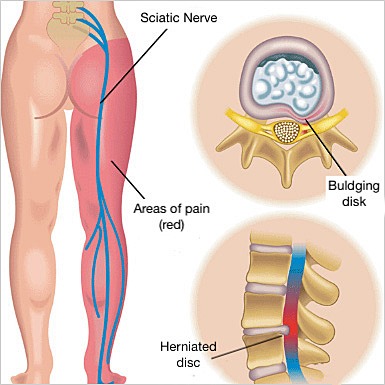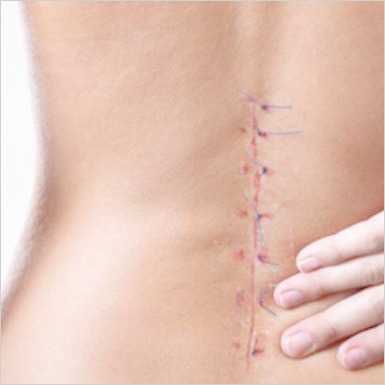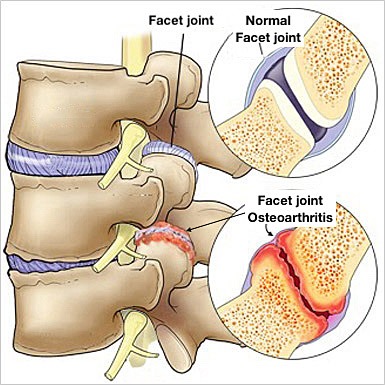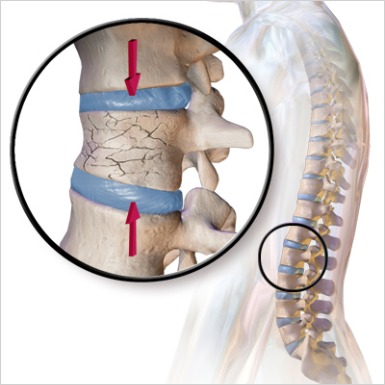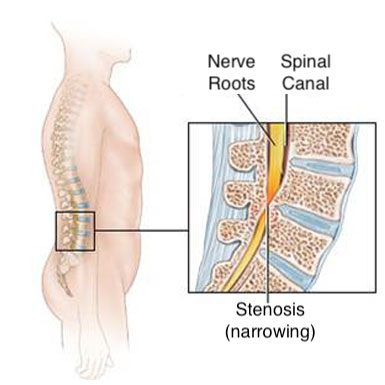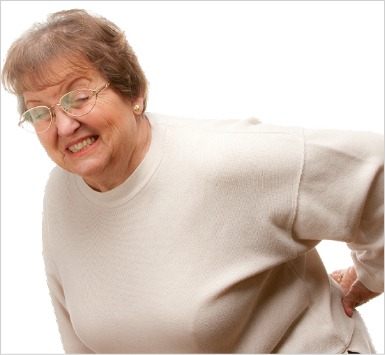Back Pain Treatment Home » Conditions Treated
Avoid Surgery
Non-Surgical treatments for Back Pain
Degenerative Disc Disease is one of the most common causes of lower back pain. Degenerative Disc Disease refers to symptoms of back or neck pain caused by wear-and-tear on a spinal disc. It is also known as:
Discogenic Pain;
Disc Protrusion;
Disc Herniation;
Slipped Disc;
Disc Bulge; and,
Disc Tear/s.
In some cases, Degenerative Disc Disease also causes leaky discs and radicular pain: weakness, numbness, and hot, shooting pains in the arms or legs (Sciatica.)
Sciatica describes symptoms of leg pain, tingling, numbness, or weakness that travel down the low back via the sciatic nerve in the back of the leg. Sciatica is a description of leg symptoms, not a diagnosis. It is also known as:
Pinche Nerve;
Lumbar Radiculopathy; and,
Radicular Leg Pain.
Sciatica can be caused by a Herniated Disc, Leaky Disc, Spinal Stenosis, Degenerative Disc Disease, and Spondylolisthesis.
Failed Back Surgery is a very generalized term that is used to describe post surgical back pain. It refers to the condition of patients who have had back surgery or spine surgery and continue to experience pain after surgery. Failed Back Surgery is also known as:
Failed Back Surgery Syndrome (FBSS);
Post Spinal Fusion Surgery Pain;
Post Laminectomy Syndrome;
Failed Back Syndrome;
Failed Back Surgery; and,
Failed Spinal Fusion.
Arthritis is the most common cause of low back pain, especially in people over age 50. Lumbar osteoarthritis is a form of degenerative arthritis in the low back that causes pain, stiffness, and inflammation.
The lower back contains five sets of facet joints, one on the left and one on the right side of each vertebral bone. Like joints in any other part of the body the lower back facet joints can be injured, or become inflamed. Osteoarthritis of the lower back is also known as:
Degenerative Arthritis of the Spine;
Facet Joint Dysfunction;
Facet Joint Arthritis;
Spinal Osteoarthritis: and,
Lumbar Arthritis.
Sacroiliac Joint Arthritis can often result in lower back pain that may appear identical to facet joint arthritis. Diagnosing the correct cause of your pain is critical to finding the most appropriate treatment.
Vertebral Compression Fractures occur when a vertebral body in the spine collapses, which can lead to severe pain, deformity and loss of height. These fractures occur more commonly in the middle section of the back (thoracic spine), especially the lower part of the thoracic spine. Vertebral Compression Fractures are most commonly due to osteoporosis of the vertebral body leading to weakness and collapse. Vertebral Compression Fractures are also known as:
Spinal Compression Fracture;
Disc Compression Fracture;
Osteoporotic Fracture;
Vertebral Fracture;
Wedge Fracture;
Crush Fracture; and,
Burst Fracture.
Vertebral Compression Fractures can result in acute back pain, leading to chronic pain, deformity, loss of height, crowding of internal organs, and loss of muscle.
Spinal Stenosis occurs when your spinal canal has narrowed, putting pressure on your spinal nerves. This usually occurs in the lower back (Lumbar Spinal Stenosis) but can also occur in the neck (Cervical Spinal Stenosis).
Lumbar Spinal Stenosis symptoms are usually worse when you stand or walk and usually feels better when you lean on a shopping cart, sit, or lie down. Patients suffering with this condition have a hard time standing completely upright and tend to bend or stoop forward as they stand and walk. Lumbar Spinal Stenosis can result in numbness, tingling, weakness or even pain or cramps in the foot or leg or lower back pain.
Cervical Spinal Stenosis can present with numbness, tingling, weakness or even pain or cramps in the hand, arm, foot or leg or neck pain. Problems with walking and balance can also occur.
Most episodes of low back pain are caused by damage to the soft tissues supporting the lower spine such as the muscles, tendons, and ligaments. When overstressed, these can become injured and sometimes, extremely painful.
There are two common types of soft tissue injuries in the lower back: Muscle strains when muscle fibers begin to tear from being overstretched or overused or Lumbar sprains when ligaments are overstretched or torn. Both have almost identical symptoms and receive the same treatment. Lower Back Sprains and Strains can include:
Interspinous Ligament Degeneration;
Iliolumbar Ligament Inflammation;
Interspinous Ligament Tear;
Pulled Back Muscle;
Ligament Sprain;
Lumbar Sprain;
Muscle Spasm; and,
Muscle Strain.

